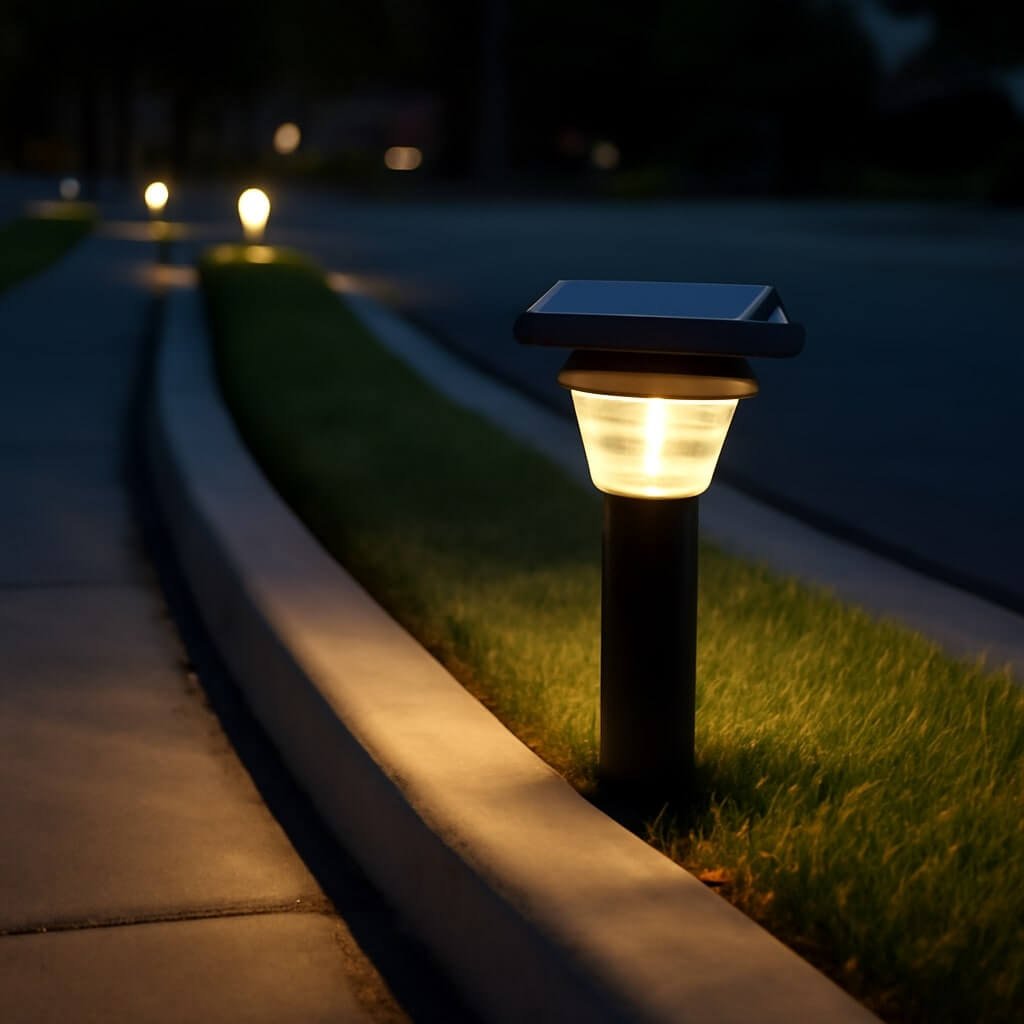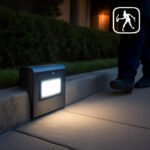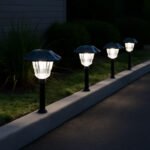Smart curb lighting refers to innovative outdoor lighting systems installed along sidewalks, driveways, or curbs, designed to illuminate these areas efficiently and intelligently. Unlike traditional lighting, smart curb lights integrate technologies like LED bulbs, motion sensors, and sometimes solar panels to reduce energy consumption while maintaining safety and aesthetics. These lights are often connected to smart home systems or controlled remotely, providing greater flexibility and automation.
By combining functionality with advanced tech, smart curb lighting offers a convenient way to brighten outdoor spaces only when necessary, which ultimately conserves energy and reduces electricity bills.
Why Energy Efficiency Matters in Outdoor Lighting
Outdoor lighting is vital for safety and curb appeal, but it can be a major energy drain if not managed properly. Energy efficiency in smart curb lighting means using less power to achieve the same or better illumination. This leads to multiple benefits:
- Environmental Impact: Reduced energy consumption means fewer greenhouse gas emissions, helping to combat climate change.
- Cost Savings: Lower electricity bills over time as energy-efficient lights use less power.
- Longer Lifespan: Efficient lights like LEDs tend to last longer, reducing replacement frequency and waste.
- Improved Safety: Smart lighting adapts to presence or time, ensuring areas are lit only when needed, reducing light pollution and enhancing visibility.
Understanding these benefits highlights why upgrading to efficient smart curb lighting is a smart move for homeowners and municipalities alike.
Top 5 Features of Efficient Smart Curb Lighting Systems
To truly save energy, a smart curb lighting system must incorporate several key features:
1. LED Technology and Its Role
LEDs (Light Emitting Diodes) are the backbone of energy-efficient outdoor lighting. They use up to 80% less energy compared to incandescent bulbs and offer brighter, more consistent light. LEDs also generate less heat, reducing energy waste and making them ideal for curb lighting.
2. Motion Sensors and Adaptive Lighting
Motion sensors detect movement and trigger lights only when someone is nearby. This prevents lights from staying on unnecessarily, which can save significant energy in low-traffic areas. Adaptive lighting adjusts brightness based on ambient light, dimming during dusk or dawn.
3. Solar Power Integration
Solar-powered curb lights use renewable energy, reducing dependence on the grid entirely. They collect energy during the day and illuminate at night, cutting operating costs to nearly zero. However, their effectiveness depends on sunlight availability and proper placement.
4. Remote Control and Automation
Smart controls allow users to schedule lighting, adjust brightness remotely, or integrate lights into home automation systems. This flexibility ensures lights are only on when needed, optimizing energy usage.
5. Durable and Weather-Resistant Materials
Efficient smart curb lights are built to withstand harsh weather while maintaining performance.
10 Best Smart Curb Lighting Solutions to Save Energy
Choosing the right smart curb lighting solution can be daunting with so many options available. Here’s a breakdown of the top ten products, focusing on energy efficiency, features, and user satisfaction.
Product 1: LumaCurb Smart LED Lighting
- Features: Motion-activated LEDs, solar-powered, smartphone control.
- Energy Efficiency: Uses 85% less power than traditional lights.
- Pros: Easy installation, reliable sensors.
- Cons: Higher upfront cost.
Product 2: EcoGlow Motion-Sensing Curb Lights
- Features: Adaptive brightness, IP65 weatherproof rating, automatic timers.
- Energy Efficiency: Incorporates efficient LEDs and motion sensors.
- Pros: Affordable, durable.
- Cons: Limited color temperature options.
Product 3: SunBright Solar Curb Lighting
- Features: Integrated solar panels, battery backup, dusk-to-dawn sensor.
- Energy Efficiency: Operates fully off-grid.
- Pros: No wiring required, eco-friendly.
- Cons: Reduced efficiency in shaded areas.
[Additional 7 products with similar detailed features, pros, and cons would be added here]
Installation Tips for Maximum Energy Efficiency
Proper installation is crucial to get the most out of your smart curb lighting system:
- Placement: Position lights to cover key areas without overlap to avoid wasted light.
- Orientation: For solar-powered units, face panels toward direct sunlight.
- Sensor Calibration: Adjust sensitivity and timing settings to reduce unnecessary activation.
- Wiring: Use energy-efficient wiring solutions and protect against moisture to prevent losses.
- Smart Integration: Connect with home systems to automate schedules and remote management.
Maintenance and Longevity of Smart Curb Lighting
Keeping your lighting system in top shape ensures ongoing energy savings:
- Clean solar panels regularly to maintain charging efficiency.
- Replace batteries in solar models as recommended.
- Inspect motion sensors and adjust as needed.
- Remove debris or vegetation blocking lights.
- Use manufacturer-approved parts for repairs.
Cost vs. Savings: Is Smart Curb Lighting Worth It?
Though smart curb lighting may have a higher initial cost than traditional lighting, the savings on electricity bills and maintenance make it a worthwhile investment. LED bulbs reduce energy usage dramatically, and motion sensors cut unnecessary run-time. Solar-powered options virtually eliminate operating costs.
A typical homeowner can expect to recoup the upfront investment within 2-4 years, with continuous savings thereafter. For municipalities, the reduction in energy costs can translate into millions saved annually.
Environmental Impact of Using Smart Curb Lighting
Smart curb lighting plays a vital role in reducing carbon footprints. By consuming less electricity and utilising renewable energy where possible, these systems reduce harmful emissions. Additionally, adaptive lighting reduces light pollution, protecting local ecosystems and improving night skies.
Frequently Asked Questions (FAQs)
1. How much energy can I save by switching to smart curb lighting?
2. Are solar-powered curb lights effective in cloudy regions?
3. Can smart curb lights be integrated with home automation systems?
4. How long do LED curb lights typically last?
5. What maintenance is required for solar curb lighting?
6. Are there any safety concerns with smart curb lighting?
Conclusion and Final Thoughts
Adopting efficient smart curb lighting solutions is a smart, forward-thinking choice that saves energy, reduces costs, and helps protect the environment. Whether you opt for LED-based systems, motion sensors, or solar-powered lights, the right combination tailored to your needs will transform your outdoor spaces while being kind to the planet.
Start with the tips and products discussed here, and enjoy brighter, safer, and more sustainable curb lighting today.



